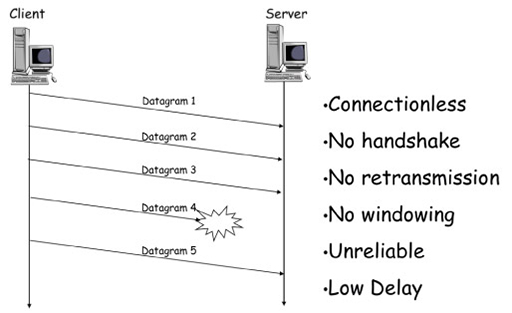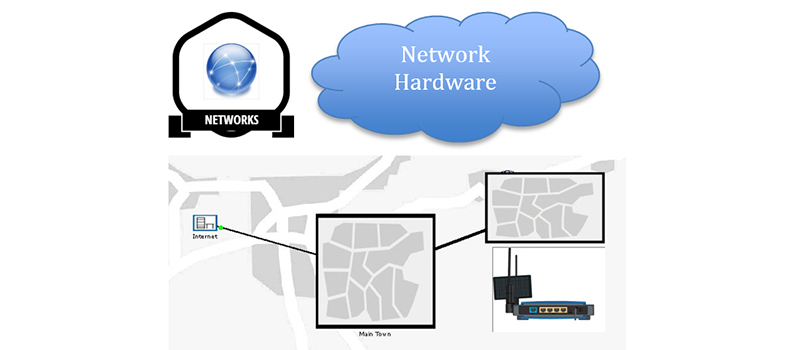6 Transport layer – UDP
- UDP is a lightweight transport layer protocol that offers the same data segmentation and reassembly services as TCP, but without TCP’s reliability and flow control mechanisms. The advantage of using UDP is that it can rapidly send data through the transport layer without the delays that are introduced by TCP’s reliability mechanisms. This is important for real-time programs, such as voice and video services, which work best with minimal delay between communicating devices.
- UDP does not use sequence numbers or windowing, so there is no need for a three-way handshake to set initial values. If a device using UDP becomes swamped by an excessive number of datagrams, it will simply drop those that it cannot process.
- Because UDP does not use sequence numbers, it is unable to re-order datagrams that it receives in the wrong order.

Figure 6
- Although we talk about UDP segmenting data, the PDUs it creates are referred to as datagrams to differentiate them from TCP segments:

Figure 7
- The image above illustrates a UDP datagram header, which is very simple when compared to the TCP segment header shown earlier. It is also much smaller, containing only 8 bytes of data. This is a factor in reducing the delay of processing UDP datagrams. The only field it shares with TCP headers are the source and destination port fields, which are used to identify the application layer protocol being supported, and a check-sum field for detecting data errors in received datagrams.
Back to previous pagePrevious
5 TCP reliability
